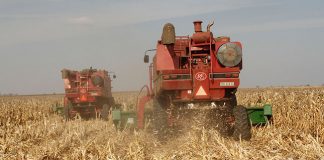
According to the latest Food Inflation Brief of the Bureau for Food and Agricultural Policy (BFAP), food inflation had been declining in China, Brazil, the US and the EU since January, but saw small increases, following declining trends, since March in South Africa and Kenya.
In September, Zambia (13,4%), the EU (9,4%) and South Africa (8,1%) had the highest year-on-year inflation of the countries included in the comparison. Kenya’s was at 7,9%, the US at 3,7%, Brazil at 0,9% and China at -3,2%.
READ Plan adopted to phase out hazardous pesticides
The international slowdown in inflation is primarily attributed to a decline in international commodity prices. The FAO Food Price Index (FPI) in September fell to a value of 121,5. Similar index values were last observed in March/April 2021. This is 11% lower than a year ago, and 0,1% lower than in August.
From January to September 2023, the FAO FPI and sub-indexes for meat, dairy, cereals and oils had consistently negative year-on-year inflation rates, with most deflation for September observed for dairy (-24%) and oils (-21%), followed by cereals (-15%). Meat inflation decreased by 5%, whereas sugar inflation increased by 48%.
In South Africa, inflation on oils and fats only decreased by 7,7% year-on-year, and was 0,3% higher month-on-month. Inflation on meat increased by 3,8% year-on-year, and 0,6% month-on-month, whereas it increased by 9,2% year-on-year and 0,6% month-on-month for bread and cereals, and by 11,2% year-on-year and 0,1% month-on-month for dairy and eggs.
Year-on-year inflation was the highest for sugar-rich foods (17,7%), which increased by 0,6% month-on-month, followed by vegetables (15,3%), which decreased by 0,2% month-on-month.
READ Potato and onion prices see major spike as load-shedding bites
BFAP made a list of commonly purchased food in South Africa and how inflation was affecting it year-on-year in September. According to this, inflation on onions, cauliflower, potatoes and brown sugar was at 30% and higher, whereas it was between 20% and 30% for rice, bananas, pears, broccoli, sweet potatoes, polony, frozen hake, Ceylon tea, white sugar, and soup powder.
Inflation was between 10% and 20% for maize meal, papayas, carrots, cucumbers, pumpkin, mushrooms, cabbage, corned beef and beef extract, bacon, fresh portions of chicken and giblets, frozen fish fingers, peanut butter, canned baked beans, milk, cheese, yoghurt, whiteners, coffee, fruit juice, mineral water, sugar-rich foods, baking powder, spices and instant yeast.
Deflation was seen in white bread, pineapple, oranges, canned vegetables, beef, mutton and lamb, pork chops, fresh whole chicken and eggs, fresh cream, and sunflower and canola oil.
The cost of BFAP’s Thrifty Healthy Food Basket, which measures the cost of basic healthy eating for low-income households in South Africa, increased by R343 year-on-year to R3 576 per month in September, which was R7,09 less than the month before.
Dr Marlene Louw, senior economist at Absa AgriBusiness, said that expected lower fuel prices in November, in combination with the traditional strengthening of the rand during the fourth quarter of the year, could help to ease inflation in South Africa in the coming months.
Other factors that could affect inflation included international maize and soya bean supplies, which would become clearer in the next few weeks as the US moves closer to its harvest, as well as higher potato prices.
“Farmers had been planting less potatoes due to high input costs and the impact of load-shedding on irrigation. The higher prices seen recently, however, might have motivated farmers to plant more,” she said.
She added that it was still uncertain how avian influenza would affect meat price inflation, but she expected the disease to have a negative impact on egg price inflation up until the middle of 2024.
With high prices, she said that consumers had become more strategic in their purchasing behaviour, buying smaller volumes at a time to reduce wastage, and also pulling resources to buy things in bulk and save costs.











